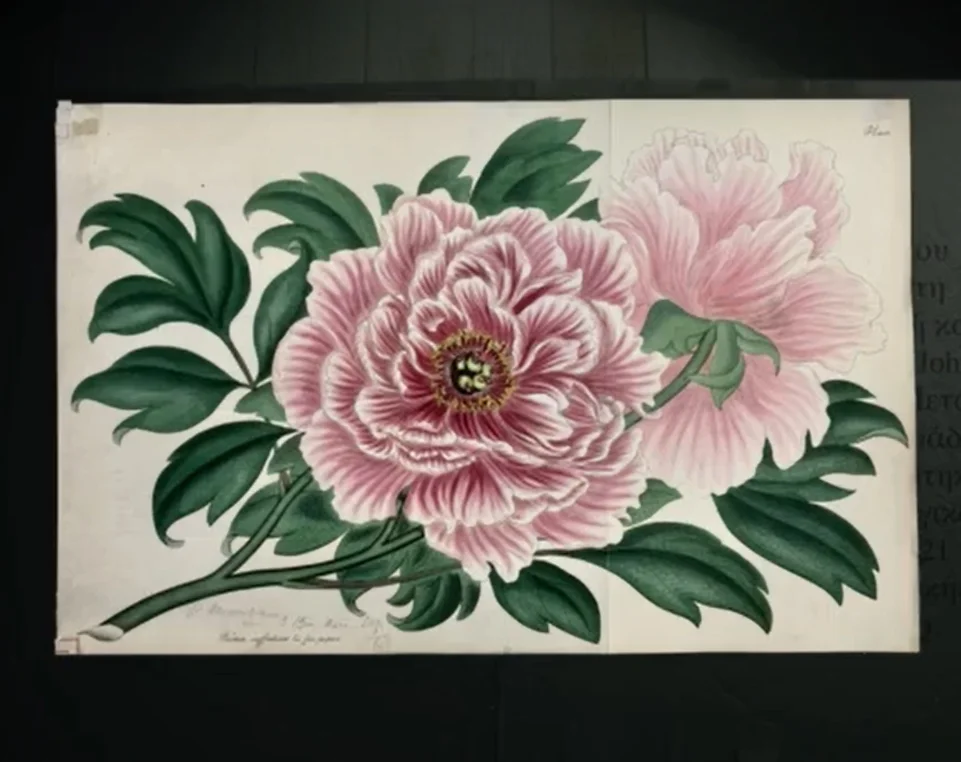Nasz zielnik (Herbarium) posiada ogromną kolekcję roślin z parków i ogrodów botanicznych. Został stworzony przez botanika z Manchesteru, twórcy i nauczyciela Leopolda Hartley’a Grindon’a, aby wesprzeć jego pracę w zachęcaniu ludzi do zwracania uwagi na otaczające ich rośliny oraz zająć się ogrodnictwem.
Grindon powiedział, że „tysiące okazów służą jako rozkoszne wspomnienia spędzania przyjemnych długich godzin – tak jak zdjęcia z wakacji” do tego zmieszane zsadzonkami, to jakby migawka/wycinek ogrodnictwa epoki wiktoriańskiej.
Jeśli masz dostęp do okna, podwórka lub ogrodu, a nawet do rośliny doniczkowej stojącej na półce, dlaczego nie zaangażować się w obywatelski projekt naukowy? Między 24 a 27 kwietnia Miasto Manchester bierze udział w Miejskim Wyzwaniu Przyrodniczym (City Nature Challenge)
Niezależnie od tego, czy masz ogród, rośliny doniczkowe czy skrzynki na oknach, teraz jest idealny czas, aby go poświęcić roslinom.
To dobry sposób na relaks mający korzystny wpływ na dobre samopoczucie.
W pomieszczeniach też mamy wspaniałe wiosenne rękodzieło dla wszystkich grup wiekowych, aby mieć zajęcie w ten świąteczny weekend: Wiosenne rękodzieło (Springtime Crafts) sekcja MMinQuarantine.
Translated by Magdalena Boris



23 Sep, 2023
Known since Ancient Greece for their medicinal virtues, peonies owe their name to the mythological physician Paean who appears in book V of the Iliad. In this book, Paean uses the roots of peonies to cure Hades after he was shot with an arrow by Heracles. Paeon then became an epithet of Apollo, in his capacity as a god capable of bringing disease and therefore propitiated as a god of healing. Later, Paeon also becomes an epithet of Asclepius, the healer-god.
Ancient writings seem to confirm the medical properties of peonies. Notably, their roots were commonly used to prepare medicines used to heal convulsions and other muscular diseases, to heal sores, and to cure insomnia and night terrors. They were also believed to have magical properties, capable of warding off evil spirits.
In the Middle Ages, herbaceous peonies were cultivated in monasteries and private gardens still and especially for medicinal purposes. Their virtues are due to peonin, an alkaloid found in every part of the plant, which has sedative properties.
19 Apr, 2023
In China, the peony contains many positive meanings, and is known as the ‘king of flowers’, and there is a webpage of Beijing Botanical Garden about the activity of identifying different kinds of peony:
“Peony, originating in China, has been cultivated for at least a thousand years according to ancient poetry and pharmacopoeia records. Due to its bright colours and large flowers, it is deeply loved by people and is often regarded as the embodiment of happiness and beauty, a symbol of prosperity, and even known as the ‘national beauty and heavenly fragrance’.The valley rain in the 24 solar terms is about to arrive, which is a good time to admire the peonies. To help the public better understand the variety of peonies, understand their history, culture, and planting and maintenance knowledge, and enrich their garden experience, on Wednesday, April 19th, the National Botanical Garden Science Popularization Hall specially invited our garden horticultural centre engineer Jiao Peng to take everyone to stroll in the peony garden, admire the ‘King of Flowers’ charm and learn plant knowledge.”
19 Apr, 2023
The Chinese source for the text above, and a link to the original text:
https://baijiahao.baidu.com/s?id=1763390359479726343
牡丹,原产于中国,根据古诗文及药典记载,它的种植栽培已至少有上千年历史。因其花色艳丽、花朵硕大,深受人们喜爱,常被作为幸福美好的化身、繁荣昌盛的象征,甚至被冠以“国色天香”的美誉。
二十四节气中的谷雨即将到来,正所谓“谷雨三朝看牡丹”,此时正是观赏牡丹花的好时节。为了让公众更好地认知牡丹品种,了解牡丹历史、文化以及种植养护知识,丰富大家的游园体验,4月19日(周三)国家植物园科普馆特邀我园园艺中心工程师焦鹏,带大家一起漫步牡丹园中,赏“花王”风姿绰约的同时学习植物知识。
18 Apr, 2023
Bujorul
Bujorul românesc este o specie de floare unică în Europa, care creşte doar în anumite zone din România. Floarea rară a supravieţuit erei glaciare şi este la fel de veche ca şi crocodilii. În ţară există cinci rezervaţii naturale de bujori româneşti, zone protejate prin lege de câţiva ani. Una dintre rezervaţii se găseşte în Pădurea de la Troianul. De numele bujorului românesc se leagă vechi legende şi superstiţii. Bujorul românesc este una dintre cele patru specii ierboase deosebit de frumoase de la noi din ţară. Coloritul este deosebit, aproape că nu poate fi reprodus pe pânză.
31 Mar, 2023
Ideea din articol este foarte frumos dezvoltata, ai reușit să aduci informații despre flora României în muzeul din Manchester.